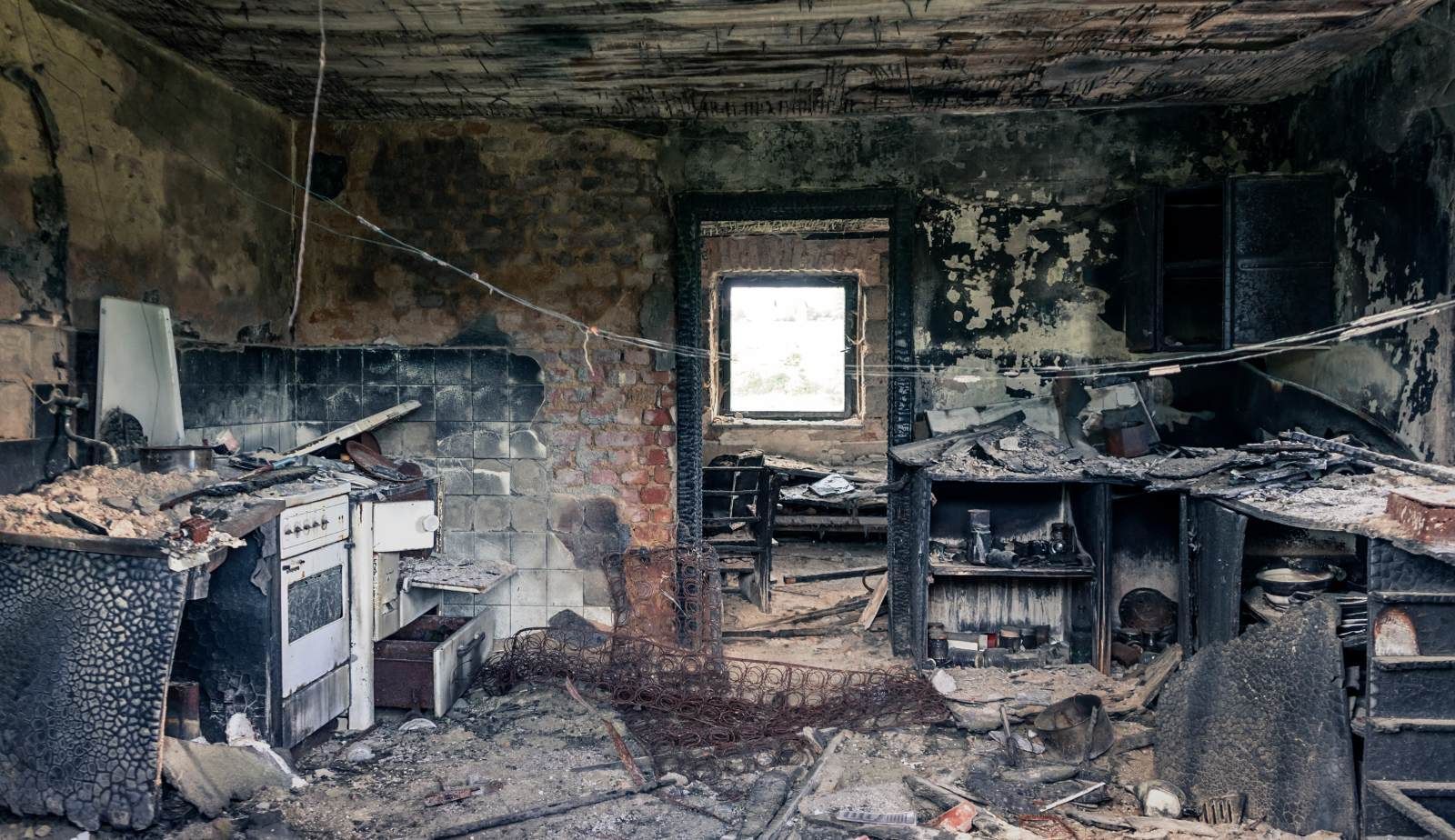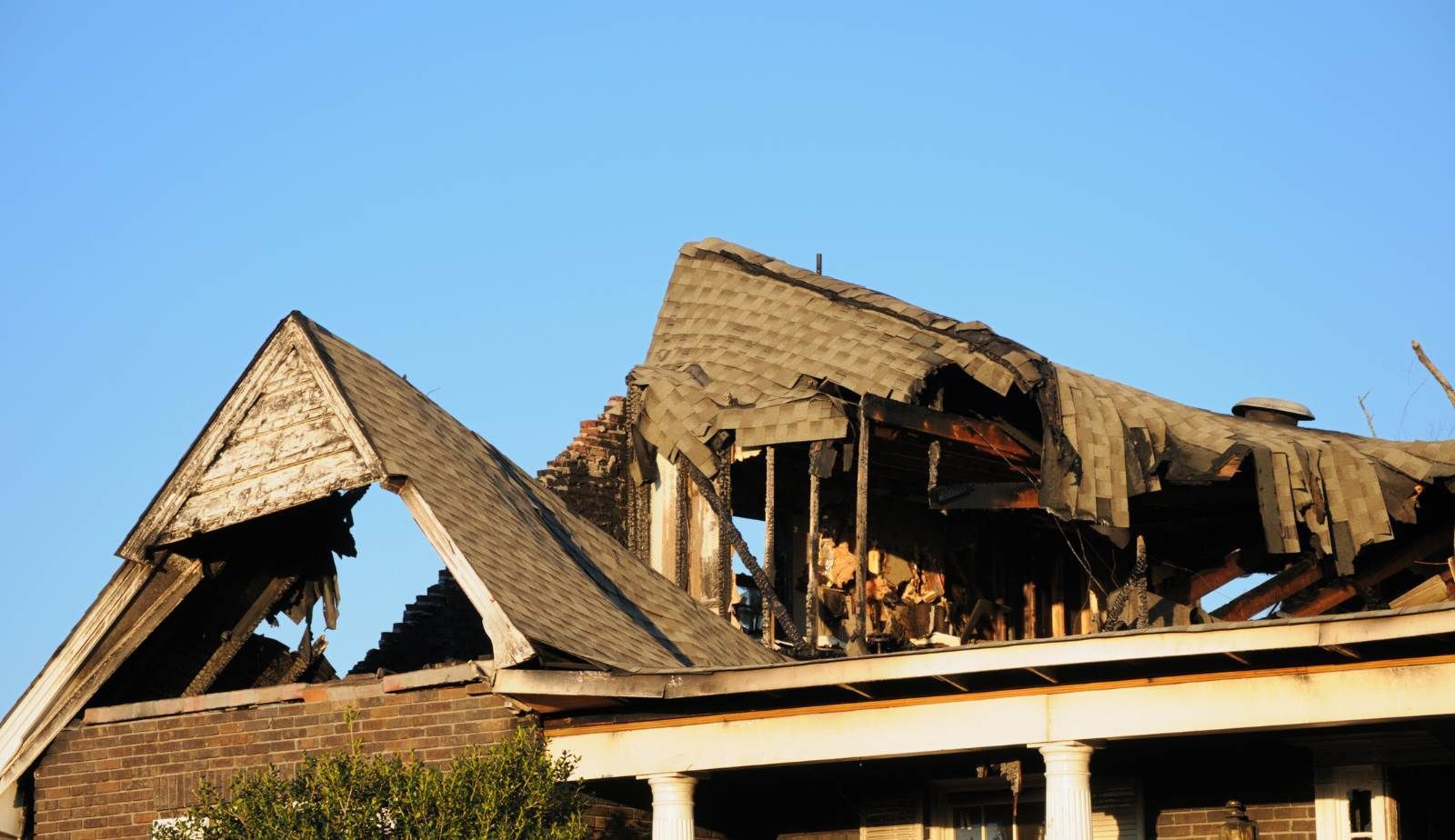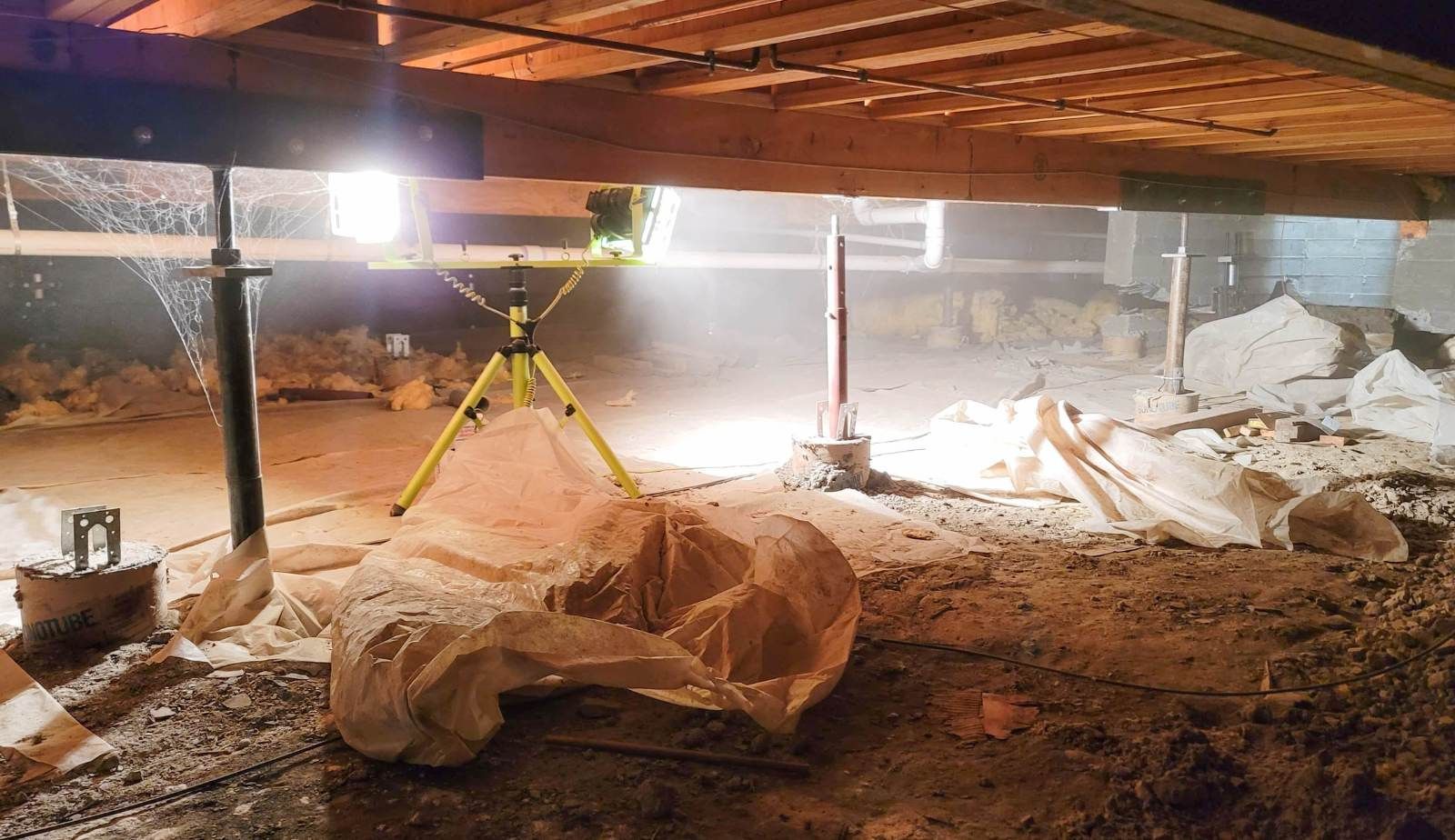Drymax Fire, Water & Mold Restoration: Expert Services for Louisiana Fire and Smoke Damage
When disaster strikes, immediate action is essential to minimize damage and begin the restoration process. DryMax Restoration in Louisiana offers comprehensive fire, water, and mold restoration services tailored to meet the needs of affected homeowners and businesses. Their IICRC-certified team is available 24/7 for emergency response, ensuring timely intervention that can significantly affect the recovery process.
DryMax specializes in various aspects of restoration, including fire damage cleanup, smoke odor removal, and water extraction after firefighting efforts. Utilizing advanced techniques such as thermal fogging, ozone treatment, and thermal imaging, they ensure thorough restoration and air quality improvement. Their commitment to quality is evident in their services, including structural drying, HEPA air filtration, and insurance claim assistance, which simplify the recovery journey for clients.
Whether one is dealing with fire damage in New Orleans, Baton Rouge, Lafayette, or Lake Charles, DryMax offers the expertise and resources to restore properties effectively. Their focus on customer satisfaction and quality work sets them apart as a trusted partner during challenging times.
About Drymax Fire, Water & Mold Restoration
Drymax Fire, Water & Mold Restoration is dedicated to providing comprehensive restoration services across Louisiana. The company prides itself on its certified technicians, a commitment to quality, and prompt emergency response for disaster situations.
Company Overview and Reputation
Drymax has established itself as a leading provider of restoration services in Louisiana, specifically known for fire and water damage mitigation. With years of experience, the company has earned a solid reputation for its professional approach and swift response times.
They utilize advanced technology and techniques to address damages, including soot removal, fire odor elimination, and structural repairs. Customer satisfaction remains a primary focus, reflected in their high ratings and positive feedback from clients across various service areas.
Service Areas in Louisiana
Drymax operates throughout Louisiana, effectively addressing the restoration needs of numerous cities. Key areas include:
- New Orleans: Quick response to both residential and commercial fire damage.
- Baton Rouge: Specialized in smoke and water damage cleanup.
- Lafayette: Focused on mold remediation and structural drying.
- Lake Charles: Provides 24/7 emergency services for a variety of restoration challenges.
This geographic coverage ensures that they can assist clients throughout the state with tailored restoration solutions.
Certified Restoration Technicians
Technicians at Drymax are IICRC-certified, ensuring that they meet industry standards in restoration practices. Their training covers essential areas such as:
- Water Extraction: Efficient removal of water following firefighting.
- Dehumidification: Reducing humidity to prevent mold growth.
- Contents Pack-Out: Safe handling and cleaning of belongings affected by fire and water.
With a team of skilled professionals, Drymax guarantees meticulous attention to detail in all restoration efforts, providing clients with peace of mind during challenging times.
24/7 Emergency Damage Restoration Services
Drymax Restoration offers comprehensive 24/7 emergency damage restoration services to address fire, water, and mold issues promptly and effectively. Their commitment to rapid response ensures that clients receive the assistance they need without delay.
Rapid Response and 60-Minute Arrival
In emergency situations, time is critical. Drymax Restoration guarantees a rapid response with a 60-minute arrival time for disaster situations. Their trained technicians are always prepared to mobilize immediately, equipped with the necessary tools and expertise to evaluate the damage and begin restoration efforts.
Timely intervention not only mitigates damage but also reduces the potential for secondary issues, such as mold growth. With a quick assessment, Drymax can create a tailored action plan to address specific concerns, ensuring efficient restoration.
Emergency Board-Up and Tarping
Securing properties affected by fire or water damage is a crucial first step. Drymax Restoration provides emergency board-up and tarping services to protect exposed areas from further harm. This temporary measure prevents unwanted elements from entering the property, which can exacerbate damage or lead to additional risks.
Their skilled technicians quickly assess the situation and implement appropriate board-up solutions. Materials used are durable and designed to withstand environmental conditions until permanent repairs can be completed. This quick action helps preserve the integrity of the property while restoration efforts commence.
Insurance Claim Assistance Process
Navigating the insurance claim process can often be overwhelming. Drymax Restoration offers dedicated insurance claim assistance to support clients in submitting claims smoothly. Their team has experience in dealing with various insurance providers, ensuring all necessary documentation is accurately prepared and submitted.
They help clients understand their coverage options and work to ensure that claimed damages are fully represented. This support alleviates stress during a challenging time, allowing clients to focus on recovery. With Drymax’s assistance, clients can efficiently manage the financial aspects of restoration while ensuring that their property is restored to its pre-damage condition.

Comprehensive Fire Damage Restoration in Louisiana
Effective fire damage restoration involves a thorough process of assessment, cleanup, and odor removal. Each step is crucial to returning properties to their pre-incident condition while ensuring safety and compliance with industry standards.
Fire Damage Assessment and Inspection
The initial phase of fire damage restoration is a comprehensive assessment. Specialists conduct a detailed inspection to identify the extent of damage. This includes evaluating structural integrity, identifying affected materials, and assessing electrical systems.
Fire damage inspectors use advanced tools to analyze smoke patterns and damage levels. This assessment helps prioritize restoration efforts and allows for accurate insurance claims. IICRC-certified professionals ensure compliance with safety standards throughout the assessment process.
Smoke Damage Cleanup and Soot Removal
Smoke and soot can permeate walls, ceilings, and personal belongings, making thorough cleanup essential. Professionals utilize specialized equipment for effective soot removal and smoke damage cleanup in Louisiana.
Techniques such as dry cleaning and chemical sponges are employed to avoid further damage to surfaces. HEPA air filtration systems help remove airborne particles, ensuring a clean environment. This multi-faceted approach prevents long-term health risks associated with smoke exposure.
Fire Odor Removal and Deodorization
Fire odor removal is a critical component of the restoration process. Odors can linger long after visible damage is repaired. Professionals implement thermal fogging and ozone treatments to neutralize smoke odors efficiently.
These methods penetrate materials to eliminate odors at their source, rather than merely masking them. Comprehensive deodorization helps restore the property's livability and comfort, crucial for homeowners returning after a disaster.
By combining these essential services, DryMax Restoration Louisiana provides thorough fire damage restoration tailored to the specific needs of each client.
Water Damage Restoration and Structural Drying
Effective water damage restoration and structural drying are critical after incidents involving flooding, firefighting, or plumbing failures. These processes ensure that moisture is removed efficiently, minimizing the risk of mold and structural deterioration.
Water Extraction After Firefighting
When a fire occurs, firefighting efforts often lead to significant water intrusion. Water extraction is the first step in mitigating this damage. Specialized equipment, such as submersible pumps and high-capacity vacuums, is employed to remove standing water quickly.
This process not only alleviates immediate water damage but also prevents secondary issues, such as mold growth. The extraction team assesses the affected areas, focusing on carpets, walls, and any structural components compromised by water.
Water Damage Cleanup and Removal
Once water extraction is complete, the next step is thorough cleanup and removal of damaged materials. Professionals assess items that can be salvaged versus those that must be discarded, such as saturated drywall or insulation.
Techniques employed may include:
- Soot removal: Essential for surfaces affected by both smoke and water.
- Air filtration: Utilizing HEPA filters to remove contaminants from the air.
- Cleaning solutions: Environmentally safe chemicals help restore affected surfaces.
This systematic approach not only ensures a cleaner environment but also prepares the area for structural drying.
Structural Drying and Dehumidification
Effective structural drying is crucial to prevent long-term damage. This phase involves using industrial-grade dehumidifiers and fans to reduce humidity levels significantly.
The process typically includes:
- Thermal imaging: Identifying hidden moisture pockets within walls and floors.
- Targeted airflow: Ensuring that air circulates efficiently in all affected areas.
- Continuous monitoring: Keeping track of moisture levels to achieve optimal drying results.
By controlling humidity, professionals help to prevent mold growth and reinforce the integrity of the structure, promoting a safer living or working environment.
Mold Remediation and Inspection Services
Mold growth can pose significant risks to both property and health. Addressing it promptly requires careful inspection and effective remediation strategies to ensure a safe living environment. Key techniques focus on identifying mold sources, implementing removal methods, and conducting thorough inspections and testing.
Identifying Mold Growth and Water Intrusion
Detecting mold growth involves assessing areas with high humidity or water intrusion. Common signs include visible mold patches, musty odors, and discoloration on walls or ceilings.
Key areas to inspect include:
- Basements and crawl spaces
- Bathrooms and kitchens
- Around windows and doors
- Behind appliances
Proper identification is crucial, as mold often thrives in hidden spaces. In addition, monitoring moisture levels can provide early warnings of conditions conducive to mold growth.
Professional Mold Removal Methods
Professional mold removal requires a systematic approach to ensure safety and effectiveness. Common methods include:
- Physical Removal: Cleaning surfaces with specialized equipment and cleaning agents.
- HEPA Filtration: Using high-efficiency particulate air filters to capture airborne spores.
- Thermal Fogging and Ozone Treatment: Effective techniques for deodorizing affected areas after remediation.
These methods help remove mold while minimizing the potential for recontamination. Professionals often wear protective gear and employ containment strategies to limit exposure during the remediation process.
Certified Mold Inspection and Testing
Conducting a certified mold inspection involves thorough assessment and testing to determine the extent of mold presence. Technicians typically use specialized tools such as moisture meters and air quality monitors.
Steps in the process include:
- Visual Inspection: A comprehensive walk-through to identify moisture sources and visible mold.
- Sampling: Air or surface samples may be collected for laboratory analysis.
- Reporting: Detailed reports outline findings, including mold types and recommended actions.
Using IICRC-certified professionals for inspections ensures adherence to industry standards, providing property owners with a clear plan for remediation. This thorough process is essential to restoring a safe environment.
Contents Pack-Out, Cleaning, and Recovery
In the event of fire or water damage, the recovery of personal belongings is crucial. Effective contents pack-out and cleaning services facilitate the preservation of valuable items, ensuring they are returned to their original state when possible.
Pack-Out and Inventory Management
During the pack-out process, trained professionals assess the extent of damage to personal items. They carefully catalog and photograph items, creating an inventory that helps in tracking the contents throughout the restoration process.
This systematic approach not only minimizes loss but also aids in insurance claims. Items are packed with care, using appropriate materials to prevent further damage during transport to a secure cleaning facility or storage.
Contents Cleaning for Fire and Water Damage
Contents cleaning services focus on restoring items affected by fire and water damage. Various techniques and products, tailored to specific materials, are employed to address stains, odors, and residue.
For fire-related damage, specialized cleaning protocols target smoke and soot. Water-damaged items are often assessed for mold risk, ensuring proper drying and treatment to prevent further issues. This restorative process is essential in saving personal belongings.
HEPA Air Filtration, Thermal Fogging, and Ozone Treatment
To effectively eliminate odors and contaminants left behind after fire and water damage, advanced techniques are employed. HEPA air filtration systems capture fine particles, improving air quality in the affected area.
Thermal fogging introduces a cleaning agent in fog form, which penetrates materials to neutralize odors. Ozone treatment is another option, using ozone molecules to break down odor-causing compounds. These methods are vital in restoring a healthy environment after restoration efforts.
Certifications, Compliance, and Rebuild Services
Drymax aims to provide comprehensive fire, water, and mold restoration services. Their focus on certifications, compliance with safety standards, and rebuild services ensures quality and reliability in recovery efforts.
IICRC-Certified Fire Restoration
Drymax employs technicians who are IICRC-certified in fire restoration. This certification indicates a commitment to upholding industry standards and best practices in fire damage restoration. The IICRC outlines criteria for effective restoration, ensuring technicians are trained in the latest techniques and technologies.
Certified professionals can efficiently address fire damage, smoke, and soot through proven methods. They are knowledgeable about the impact of fire on various materials, which guides effective repairs and restoration.
Rebuild and Structural Repairs
In addition to cleaning and restoration services, Drymax offers rebuild and structural repair solutions. After assessing the damage, the team provides detailed plans for restoring integrity to the structure.
This includes:
- Framing repairs
- Roof replacements
- Wall restoration
By having a comprehensive service approach, they minimize the likelihood of future issues. Clients benefit from a single point of contact for both restoration and rebuild services, simplifying the process.
Safety Standards and Cleaning Protocols
Drymax adheres to strict safety standards and employs rigorous cleaning protocols. Technicians are trained to follow guidelines that prioritize safety for both clients and workers.
Essential safety measures include:
- Personal protective equipment (PPE)
- Containment of affected areas
- Proper disposal of hazardous materials
Cleaning protocols involve advanced techniques such as HEPA air filtration to ensure a safe and clean environment post-restoration. This approach is essential in preventing further issues, such as mold growth, and guarantees thorough and effective service.

Areas Served: New Orleans, Baton Rouge, Lafayette, and Lake Charles
DryMax provides comprehensive fire damage restoration services throughout key areas in Louisiana. This includes New Orleans, Baton Rouge, Lafayette, and Lake Charles. Each city has unique needs that DryMax is well-equipped to handle with precision and care.
New Orleans Fire Damage Restoration
In New Orleans, DryMax specializes in
Frequently Asked Questions
This section addresses common inquiries regarding fire damage restoration. It outlines the essential processes involved, the effects of smoke damage, options for soot removal, and techniques for eliminating fire odors. Information about water extraction and the handling of contents after a fire incident is also included.
What steps are involved in the fire damage restoration process?
The fire damage restoration process involves several key steps. Initially, the site is assessed for safety. Then, cleanup of debris occurs, followed by smoke damage assessment. After that, fire-damaged materials are removed, and the team will begin renovation and restoration efforts.
How does smoke damage affect a property and what is the cleanup process?
Smoke damage can permeate walls, ceilings, and personal belongings, leading to persistent odors and health risks. The cleanup process includes ventilation, cleaning surfaces with specialized products, and utilizing equipment to remove smoke particles. Professional restorers may also employ thermal fogging techniques to address lingering smells.
What options are available for soot removal and cleaning?
Soot removal requires specific techniques tailored to the surfaces affected. Common methods include dry cleaning, sponge cleaning, and wet cleaning, depending on the surface material. Advanced equipment like HEPA vacuums is often used to ensure thorough removal of soot particles.
Can fire odor be completely eliminated, and what techniques are used?
Eliminating fire odor is challenging but achievable. Techniques such as thermal fogging and ozone treatment are effective in neutralizing smoke smells. Professional restoration companies often combine multiple methods to ensure that odors do not return.
How are water extraction, structural drying, and dehumidification handled after a fire?
Water extraction begins immediately after firefighting efforts to prevent further damage. High-powered pumps and vacuums are used to remove standing water. Following extraction, structural drying and dehumidification are conducted with industrial dehumidifiers and fans to lower moisture levels.
What should I expect during the contents pack-out and cleaning after a fire incident?
During the contents pack-out, professionals will carefully inventory and remove items from the affected area for cleaning and restoration. Each item is assessed for damage. Cleaning methods may vary based on the material and type of damage, ensuring items are returned in as good a condition as possible.
You might also like
DryMax Restoration Blogs





